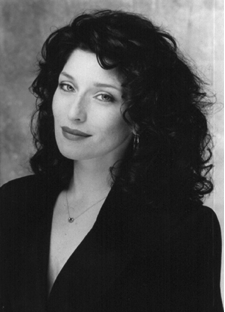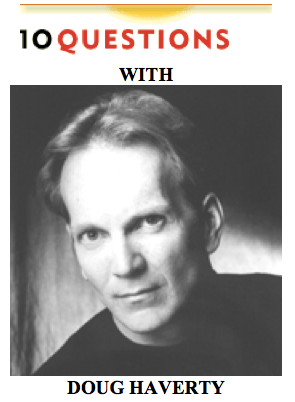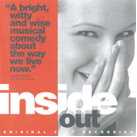Originally published on Fynsworth Alley.

Liz Larsen
Liz Larsen is perhaps best known for her role as the forensics specialist on TV’s Law and Order, or perhaps for her role as Cleo in the acclaimed Broadway revival of The Most Happy Fella. She has also appeared on Broadway in Starmites, Damn Yankees, and Fiddler on the Roof, off-Broadway in A New Brain, Little By Little, and The New Yorkers, as well as in regional theaters across the country. She has appeared on several Fynsworth Alley releases, including Lost in Boston The Ultimate Collection and Prime Time Musicals, on which she sings a duet with her husband, Sal Viviano.
DL: How did you get your start in show business?
LL: I grew up in New Hope, Pennsylvania, and in those days there was the Bucks County playhouse was sometimes used as a Broadway tryout house, but it was a really summer stock place to work. Also, across the river was the Lambertsville Music Circus – it was a really big tent that played musicals during the summer. My mother was press agent on and off for both of those theatres. So, my first show was The King and I at the Music Circus when I was three. I was the youngest kid, and Elaine Stritch played Anna. She gave me a kick one night – during the death scene. Anna wears those big hoop skirts, and I decided on opening night that it would be really funny to see if I could beat my sister to get my entire body underneath the skirt. I guess I got there faster than my sister and said, “Ha ha, Karen,” (that’s my sister’s name), and I got a big kick in the ass from Elaine Stritch. That was my introduction to show business. Other than that, you know, I would be a kid in a lot of their shows, but mostly I saw all of these shows twenty or thirty times. My mother would just sit me in the balcony and I’d watch these plays over and over. I remember when I was six watching The Lion in Winter over and over with George C. Scott and Colleen Dewhurst. I don’t remember it at all, except he was really intense. And I remember seeing James Earl Jones do The Emperor Jones. All I remember from that was “The drums, the drums.” I think I was four. So I saw all these things, and even as I grew older, after school I would go to the Playhouse, and I remember seeing Cuckoo’s Nest twenty-four times, and 1776 over thirty times, and Tea and Sympathy… Just a lot of great plays with a lot of really great people in them.
DL: So was it a foregone conclusion that that’s what you wanted to do when you grew up?
LL: I guess it was, but I wasn’t aware of it at the time. I just knew I loved to watch it and to be there. I guess I just kind of went into it without thinking about it. It wasn’t really a decision.
Continue reading



